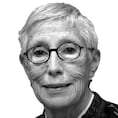The death of a young woman arrested by morality police in Iran for failing for failing to cover her head properly has transformed her into a martyr and ignited mass protests. Mahsa Amini (22), was detained in Tehran, collapsed, and died a week ago in hospital.
The authorities said she had a fatal heart attack, but many believed allegations of beatings circulating on social media. Demonstrations erupted among minority Sunni Kurds in Kurdistan province and spread to protests by majority Shia Persians in 20 cities and towns across the country.
On Thursday, the Revolutionary Guards called on the judiciary to prosecute those who “spread false news and rumours” and create instability in the streets. The police responded with force, which caused demonstrators to call for the downfall of the 43-year-old clerical regime. At least 10 people have been killed and hundreds injured and arrested.
Amini is the third young woman to personify Iranian’s quest for change. The first was Neda Agha Soltan who was shot in the chest during 2009 protests demanding annulment of a fraudulent election. The second was Vida Movahed who was jailed for a year for immorality after tying her white headscarf, or hijab, to a poll and brandishing it as a flag during anti-hijab demonstrations in Tehran.
Look inside: Detached and remodelled home on a corner site in Stillorgan for €1.175m
Car makers sound alarm as China turns off tap on mineral supplies
The ‘emotional toll’ of buying a home in Ireland: ‘split’ deals and queueing for houses already sold
Lucy Letby case roils Britain’s legal and medical establishments
The demonstrations reflect popular frustration on many levels and are the most serious since protests erupted against fuel price rises in 2019-2020. The hijab has long been the visible symbol of repression for both women and men who demand the repeal of the law making the headscarf compulsory for women. Although they drive, attend university, work, and stand for office, women cannot mix freely with men. This August, women were allowed to attend a domestic football match for the first time in 40 years. These restrictions reflect the mores of conservative rural, small-town and village communities.
During 2013-2021, the reformist government curbed the morality police and hijab observance was lax, but this did not prevent anti-hijab protests. Since ultra-conservative president Ebrahim Raisi took office last year there has been a crackdown on hijab and dress violations.
Demonstrators with different agendas have again joined forces to confront the clerics. Some demand democracy, some an end to mismanagement and corruption; others focus on economic woes, unemployment, water and power shortages, inflation, and poverty.
The regime is seen to be weak and vulnerable. President Raisi is considered illegitimate by many because his rivals were disqualified from running in the election. He is also reviled for his involvement in the executions of thousands of Iranian dissidents in the 1980s.
Uncertainty was fostered by the two-week absence of ultimate arbiter of policy, supreme leader Ayatollah Ali Khamenei (83), stoking rumours he was ailing or dead. However, on Saturday he received visiting pilgrims and on Wednesday addressed the nation on television.
There is speculation he could be succeeded by his son Mojtaba Khamenei (53), commander of the Basij militia which has been used to crush protests. In 1998, he warned, “Democracy means if the people want something that is against God’s will, then they should forget about God and religion.”













